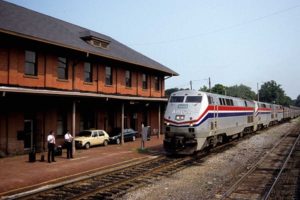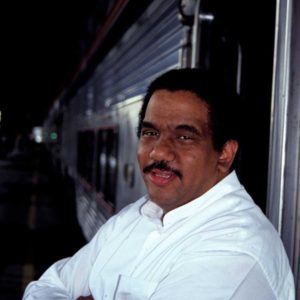
NEW ORLEANS – Centralized decision-making dominated Amtrak’s management philosophy both before and after Tom Downs’ stint as president between 1993 and 1998, but his belief that service, revenue, and expense managing choices had to be made close to the customer fueled the return to daily frequencies.
To rectify the situation Downs inherited, he instituted a business unit structure that put product line managers in charge of individual routes. Their performance was judged not only on the bottom line but on the results of newly-implemented customer satisfaction surveys, because the CEO believed this was the key to building a strong repeat business base.
Amtrak locomotive engineer Tommy McDonald assumed that role for the City of New Orleans shortly before the train was cut to five days per week.
“I was born and raised in Mississippi and people depend on that train,” he recently told Trains News Wire. “We immediately got pressure from the Memphis Transit Authority to put it back daily, and people came up to me in the rural communities wondering why it wasn’t running every day.”
Meanwhile, one of the first things he discovered was that coach passengers were not eating in the dining car because they wanted New Orleans food.
“I remember it like it was yesterday, says McDonald “Red beans and rice with turkey sausage cost $1.12 to prepare; bread pudding was 12 cents.” Margins and revenue dramatically improved when he jettisoned Amtrak’s national menu committee suggestions in favor of offerings like blackened catfish and locally-sourced Blue Bell ice cream.
“We did a business case that showed we were covering all of our labor and food costs except for the (allocated) equipment expense,” McDonald says.
Customer survey numbers began to improve, but even changing the onboard service crew base from Chicago to New Orleans only marginally helped the bottom line.
“The payroll numbers showed the labor expense side was still there, but you couldn’t use the equipment for anything else when it was laying over in Chicago or New Orleans not earning revenue,” McDonald says. “You can’t cut yourself into prosperity.”
Without second-guessing from Washington, he was able to add an all-sleeping car Mardi Gras special from Chicago on one of the days the City wasn’t scheduled to run. “It sold out! We had people mad that they couldn’t get a ticket.”
McDonald recalls it was just meant to be a marketing tool that would call attention to the City of New Orleans in Chicago and other Illinois towns along the route, “but we made money on that train. It helped me make the business case for daily service, and I have to give Tom Downs credit; he fully supported it.”
The Amtrak president also had another accolade for McDonald. After riding the train with his senior staff, Downs said, “You’re right! That’s the best damn bread pudding I ever had.”
Next: Another product line fights for more revenue















